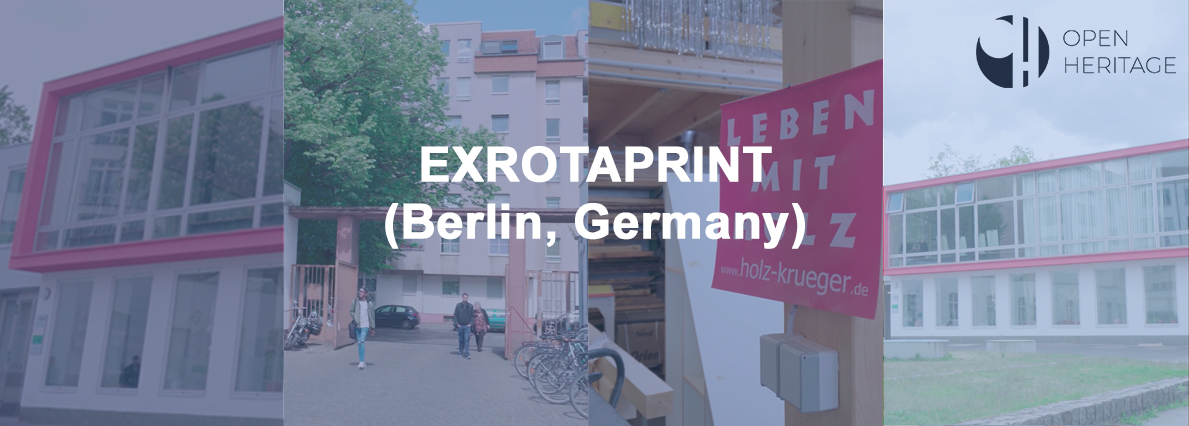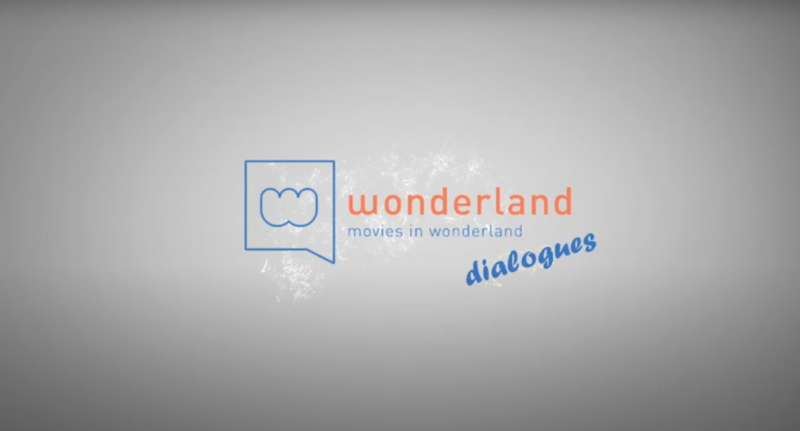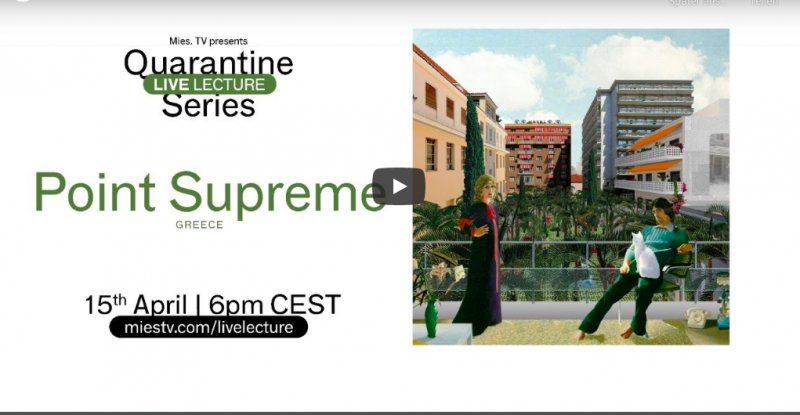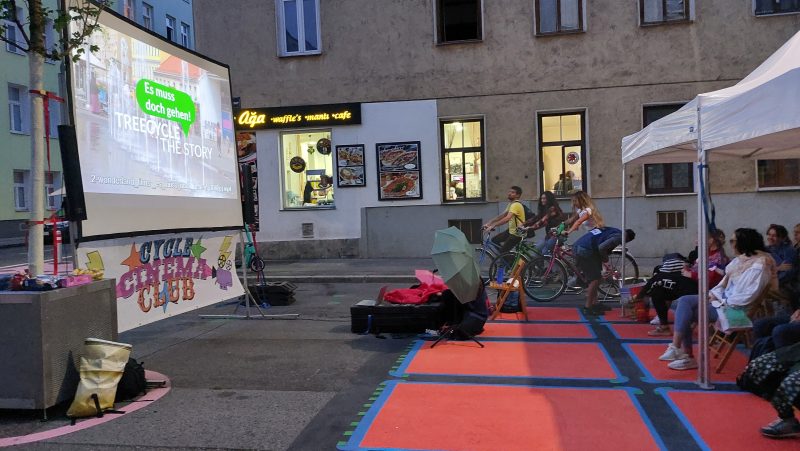Posted on: 12th July 2021
By Maryam Shah
Located in the working-class Wedding district in Berlin, ExRotaprint is housed on the site of the former printing machine manufacturer, Rotaprint. It has a complex history of evolving use and architectural features. Rotaprint survived and became a source of living for the people of the surrounding area by giving them employment opportunities for 80 years. The company had a major role in the development and changing the social fabric of the area. with time it added more built structures in the complex and associated itself with additional facilities like guest apartments. During World War Two, it was badly hit and destroyed for the most part. It was reconstructed in the post-war period and worked successfully. With the rise of electronic technology, the company started to lose its significance and struggled to survive, eventually going bankrupt in 1989. After this, the complex saw many changing uses with changing ownerships, until 2007, when the founders of the ExRotaprint project got hot of the building complex
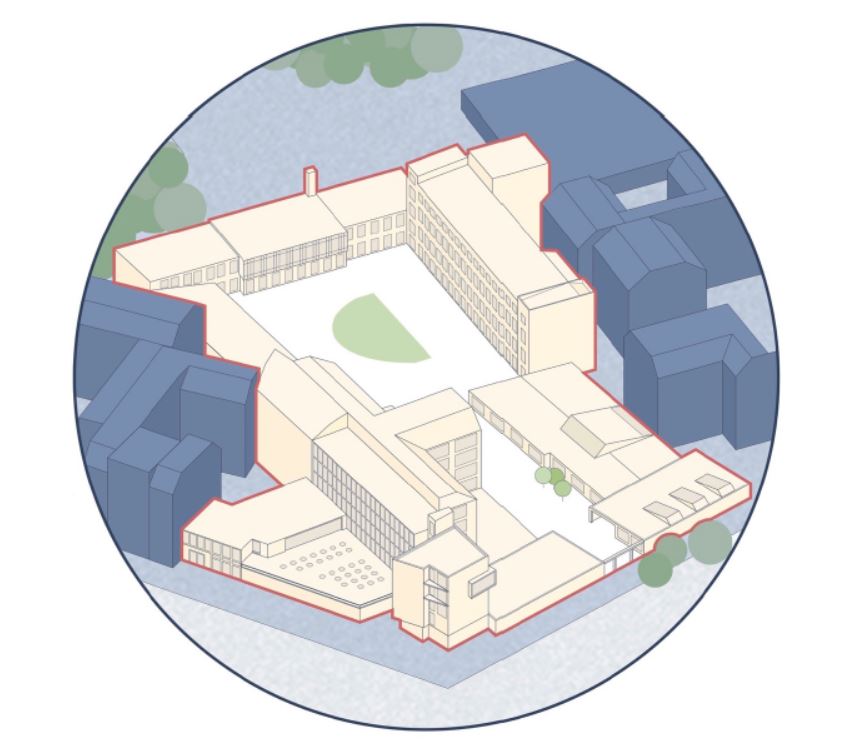
“We felt that the spirit of Rotaprint was still here, this is why we named the compound ExRotaprint. It is also to honor the achievement because we think they left fantastic buildings." Daniela Brahm
A unique ownership:
After the Rotaprint complex became public property, the Berlin state formed a new company named Leigenschaftsfons, to cater to changing real estate policies. In the city-wide privatization process, the Rotaprint complex’s buildings were also put up for sale. After much discussion and proposals, ExRotaprint was able to buy the complex for a very cheap price. To secure the purchase price against the speculative gains and have a stronghold over the complex, the ExRotaprint founders decided to split the ownership of the land and the buildings and agreed upon a heritable building right with the trias and Edith and Maryon foundations. Another step taken to protect the complex from being sold was to involve tenants by establishing a tenant association. The tenants are represented and involved in the meetings and steps to be taken for different kinds of work going on the complex. From the beginning, their idea of value and investment concerning their activities was discussed.
“We choose a non-profit limited company to exclude the possibility of individual profit and speculation, and to ensure that we will never have the same problem again with the compound being sold.” Les Schliesser
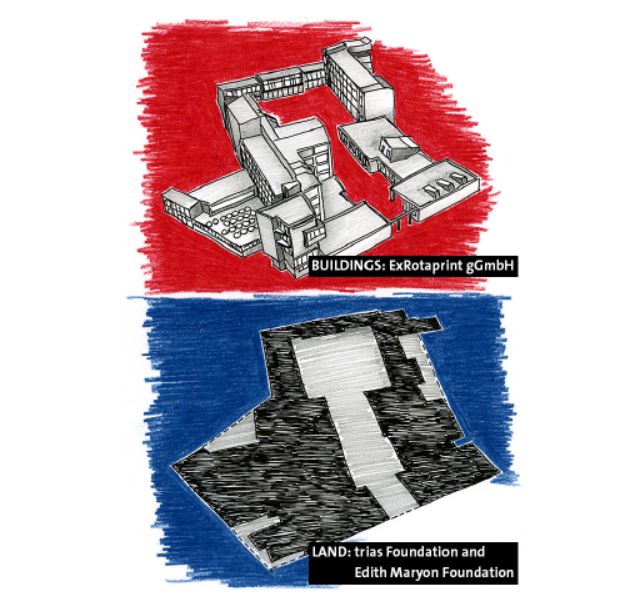
The renovation works are always carried forward after consultation and discussion with the tenants, according to their needs, all while keeping the heritage value of the buildings intact. The tenants involved that play an important role in safeguarding the buildings from being sold again is also an example of community involvement. The project is strongly connected with its immediate neighborhood, as well as the overall wedding district. It aims to work with the local community and provide services and space to them. its constant communication and involvement with the community have had a positive impact that can be seen in the form of advocacy for new approaches in real estate and city development.
Attention to architectural detail:
"The architecture was the motor driving us here and giving us energy." Daniela Brahm
The ExRotaprint site is a complex of 11 buildings. Its evolution with time can be seen in the physical features, that display the styles of the different eras as well as different architects. Its first renovation was done after its destruction in the war, where the existing buildings were tweaked to look more modern. The newly renovated buildings were then complemented with new buildings, that showcase post-war modernist architectural style. The most characteristic and unique addition to the complex is the corner tower. Standing out with its rough concrete surface. Although the tower is said to be incomplete according to the architect’s initial plan, it gives landmark identity to the whole ExRotaprint complex.
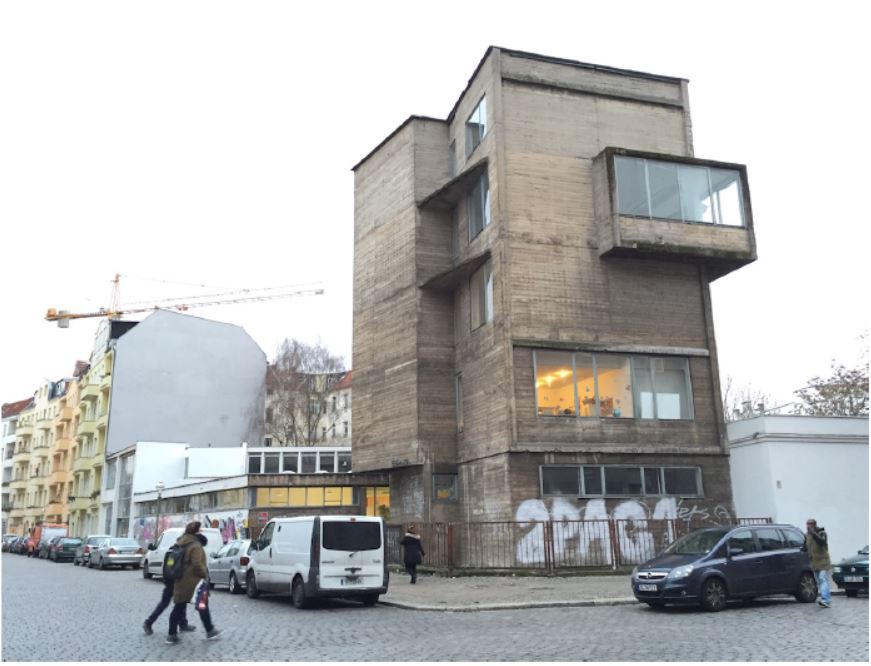
“The architects added larger windows, put white plaster on the façade, and elevated the outer wall to make it look like it had a flat roof and not a steep one. These were very small interventions but showed the intentions of the architects.” Oliver Clemens
The founders of ExRotaprint, coming from an artistic background, were so fascinated by the building’s architecture, that while working on their project, they looked deeper into the architecture and architect, Klaus Kirsten, and published a book of his works. When the team got hold of the building complex, it was in deteriorated condition. Not only was it ill well maintained in the past years, but in many places, there were irregular interventions. The condition of the buildings was in danger because of neglect and the use of toxic materials on the rooftops and walls. The first step was to prevent the buildings from further deterioration and the second was to get rid of toxic materials and update them with regards to fire and safety measures. When the renovation work started, the renters were consulted to understand their needs. Their most important concern was low rents, which meant renovating the buildings on a fixed budget. The plan was to renovate the building step by step, with most of the building occupied with regular activities and generate revenue and work on renovations side by side.
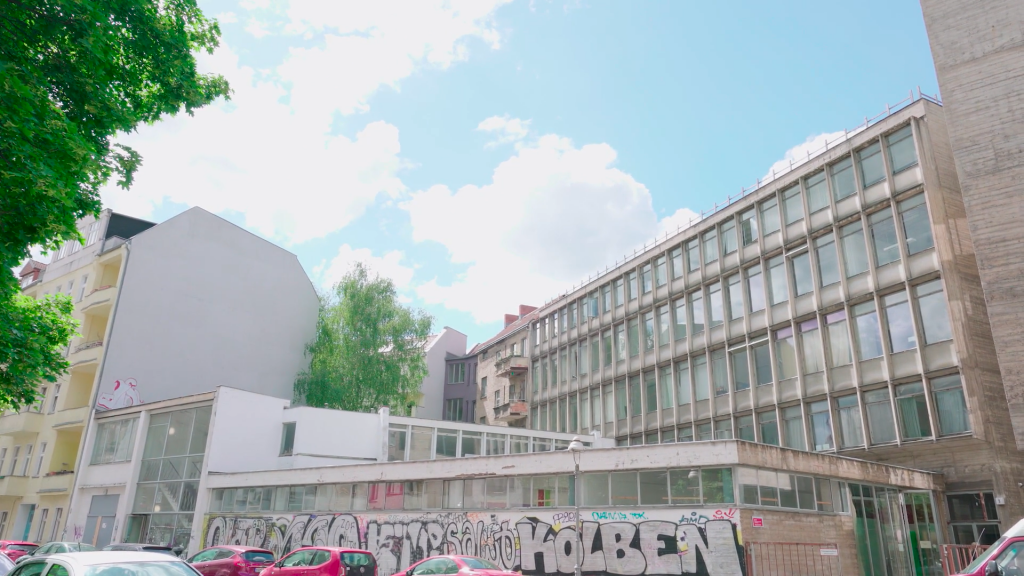
The most important aspect of the renovation works was to stay true to original architectural features and respect the spirit of the whole building complex. Even the smallest details were tried to be renovated keeping their authenticity and original materials for the interior works were retrieved, after much hard work. Experts dealing with this kind of architecture were also found particularly for the renovation of the building with the finest detail.
Open to the neighborhood and the city:
The space in the whole complex is carefully divided and dedicated to different kinds of activities. One-third of the complex is given to social projects like language classes and outreach programs for the unemployed. Another part of the area is dedicated to productive activities like workshops and companies with employment opportunities. The last part of the complex is used by artists, designers, musicians, and other creatives. It also has other spaces that are open to the public, like the canteen and ExRotaprint’s Project Room to welcome different events.
“We have this fantastic architecture, a very inspiring place, but we think it should not be for artists and creatives alone. There are designers and unemployed, and there are migrants and craftsmen and small factories, and this comes together in a heterogeneous picture.” Les Schliesser
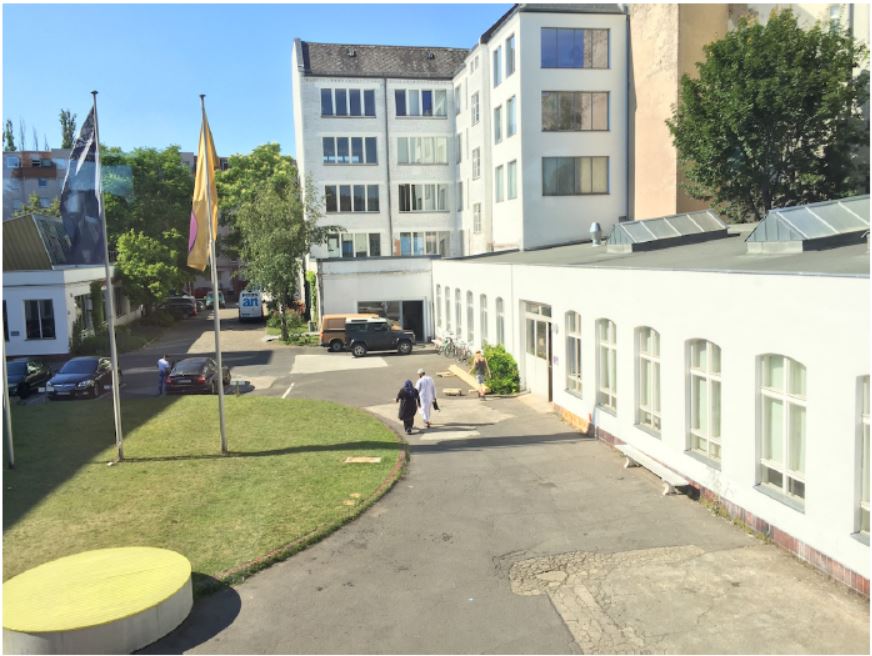
The activities happening inside the ExRotaprint complex are an example of steps taken for social inclusion. Their focus is not just one user like the creative class or the social workers, rather it is a combination of all that, in many aspects, helps shape the surrounding area for the better.
Watch the video with insights about ExRotaprint, produced by Eutropian.
Download ExRotaprint, Berlin Observatory Case for in-depth study.

